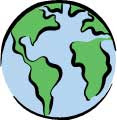Thursday, December 17, 2009
Deep-sea Volcano Video
(Courtesy NSF, NOAA, AIVL/WHOI)
Oceanographers using the remotely operated vehicle (ROV) Jason discovered and recorded the first video and still images of a deep-sea volcano actively erupting molten lava on the seafloor.
Jason, designed and operated by the Woods Hole Oceanographic Institution for the National Deep Submergence Facility, utilized a prototype, high-definition still and video camera to capture the powerful event nearly 4,000 feet below the surface of the Pacific Ocean, in an area bounded by Fiji, Tonga and Samoa.
Tuesday, December 15, 2009
Mayon Volcano Alert
20,000 evacuated as Mayon Volcano oozes lava
MANILA, Philippines -- Alert level 3 remained hoisted over Mayon Volcano as of Tuesday because of its highly restive state, the Philippine Institute of Volcanology and Seismology (Phivolcs) said.
In a bulletin released by the agency on Tuesday, it said the alert level meant the enforcement of a six-kilometer permanent danger zone (PDZ) around the volcano.
In addition, a seven-kilometer extended danger zone on the southeast flank of the volcano is also off-limits.
These areas, Phivolcs said, “should be free from human activity because of sudden explosions that may generate hazardous volcanic flows.”
“In addition, areas in the southeast that are outside the seven kilometer danger zone but within eight kilometers of the crater should be on extra alert for increased volcanic activity,” the agency said.
Saturday, December 5, 2009
Reading Ice Core Lesson Plans
Frozen in Time: Ice Cores by Jan French

Click here for the Pdf lesson, complete with ice core instructions and student worksheet.

Click here for PBS "Stories in the Ice."

Click here for National Ice Core Laboratory.

Click here for another Pdf lesson in which the students model their own ice cores using play dough and other substances. Then their cores are exchanges and studied. Very kewl!

Click here for a nice "movie" of the life of a snowflake, showing how a glacier forms in layers from snow. Click here for accompanying lesson.


